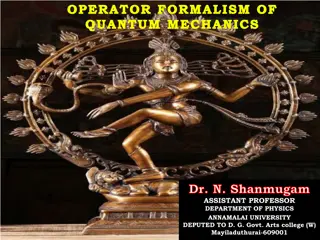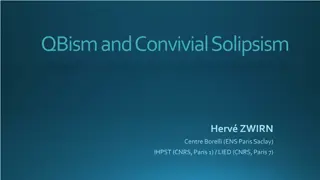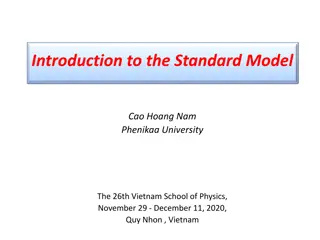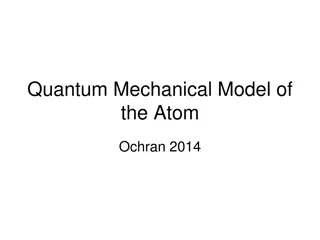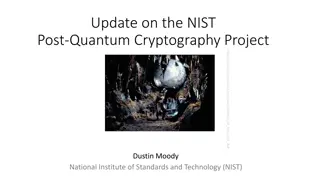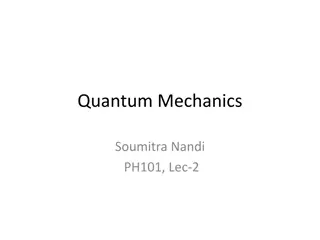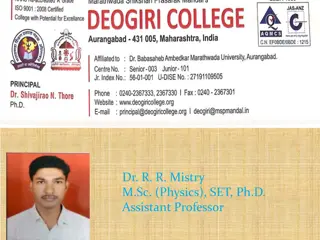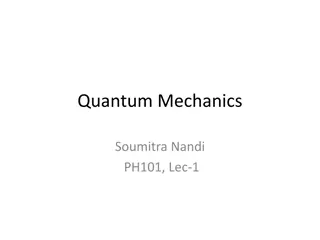Understanding Stark Effect in Quantum Mechanics: A Comprehensive Overview
Stark Effect is the splitting of spectral lines in the presence of an external electric field, named after physicist J. Stark. This phenomenon can be observed in linear and quadratic forms, influencing energy levels in atoms. The interaction energy and splitting of energy levels are essential aspects to consider, leading to significant shifts and polarizations. Factors related to Stark splitting, such as the number of component lines and their spacing, provide insights into the behavior of atoms under external electric fields.
Download Presentation

Please find below an Image/Link to download the presentation.
The content on the website is provided AS IS for your information and personal use only. It may not be sold, licensed, or shared on other websites without obtaining consent from the author. Download presentation by click this link. If you encounter any issues during the download, it is possible that the publisher has removed the file from their server.
E N D
Presentation Transcript
SUBMITTED BY NAME : MD MOFIJUL ALI ROLL NO :239 SUBJECT : QUANTUM MECHANICS AND APPLICATIONS CLASS : BSC 5THSEMESTER
SEMINAR PRESENTATION TOPIC : STARK EFFECT
INTRODUCTION: The splitting of spectral lines in the presence of externally applied electric field is called Stark Effect.The effect was named after the German physicist J.Stark, in1913. J.Stark was awarded by Nobel prize in physics in 1919 for discovery of stark effect.Stark effect was discovered discovery of Zeeman effect (1896). who discovered it 17 years after the
TYPES OF STARK EFFECT The Stark Effect can be observed in the following types : 1. THE LINEAR STARK EFFECT 2. THE QUADRATIC STARK EFFECT
1. THE LINEAR STARK EFFECT: The Linear stark effect arises due to a dipole moment that arises from a naturally occurring non-symmetric distribution of electrical charge. The Linear or first-order Stark effect --------- a. Occurs for lower values of quantum number n and upto electric field strength ???volts per meter. b. The interaction energy directly proportional to the electric field strength, i.e E E. c. The symmetrical spilitting of energy levels about their field free position is observed.
2.THE QUADRATIC STARK EFFECT: The Quadratic stark effect arises due to a dipole moment that is induced by the external field. In case of Quadratic or second-order Stark effect--------- a. The electric field exceeds the value ???volts per meter and there occurs a shift of line patterns which are proportional to ??. b. Unidirectional displacement of each line is observed . c. The `splitting of energy levels by an electric field requires that first the field polarizes the atom and then interacts with the resulting electric dipole moment . d. The electric field produces a relative shift in the centre of gravity and negative charges of the atom and hence the atom becomes an electric dipole.
SOME FACTS RELATED TO STARK SPLITTING Each spectral line is split into a number of sharp component lines in the presence of external electric field. The number of component lines and the gap between lines increase in principal quantum number ,n. The interaction energy of a hydrogen-like atom in the presence of external electric field can be expressed as: 1. 2. 3. E= AE + B??+ C?? 4. where E is the electric field strength in volt/meter and coefficients A,B,and C have been determined from classical and quantum mechanical considerations. 5.
CONCLUSION: It is experimentally more difficult to observe Stark effect as compared to Zeeman effect , because of the difficulty faced in generating strong electric fields. Earlier scientists failed to maintain a strong electry field in conventional spectroscopic light sources because of the high electrical conductivity of luminous gases or vapours.






